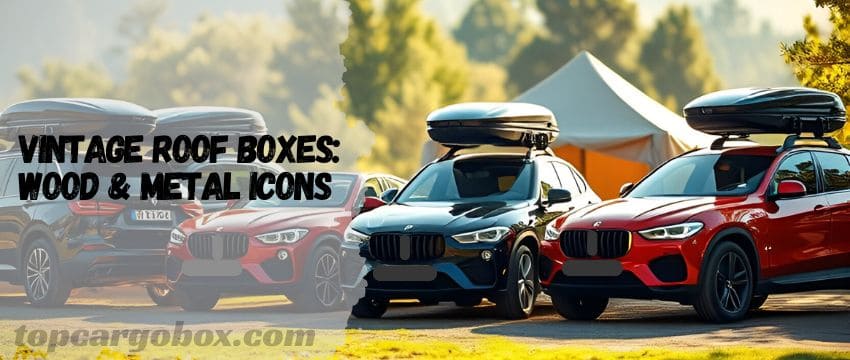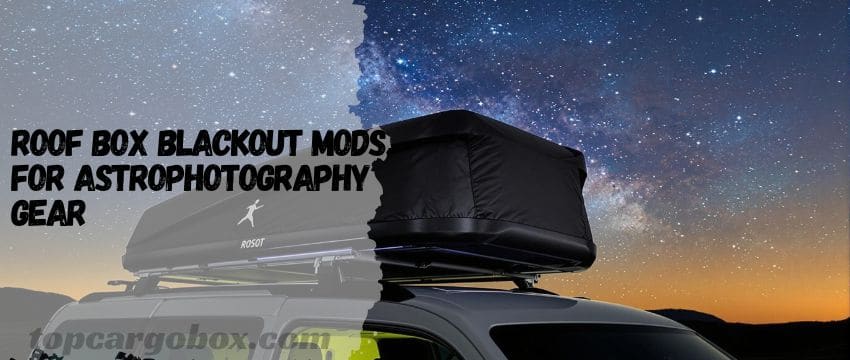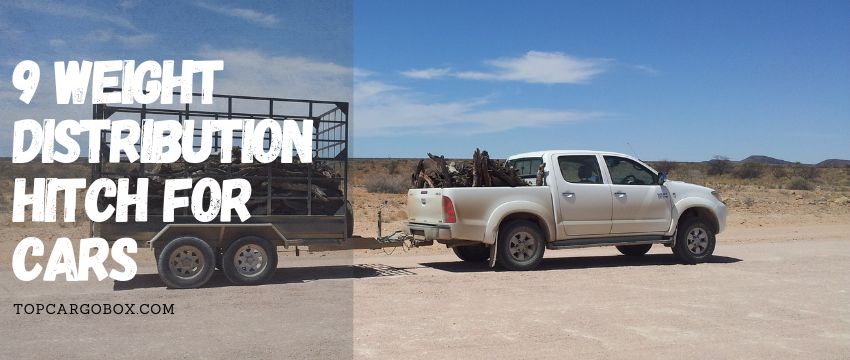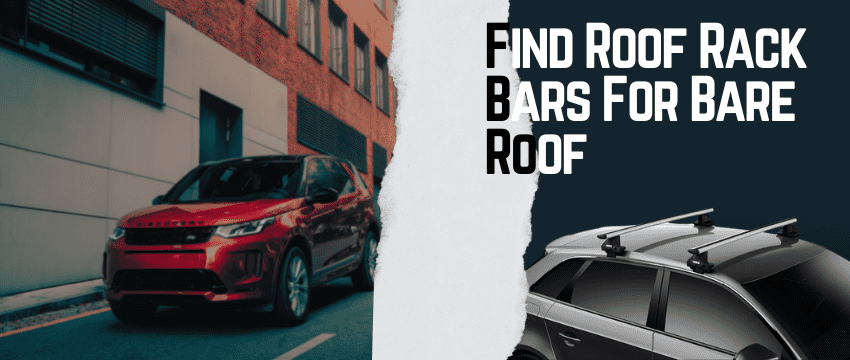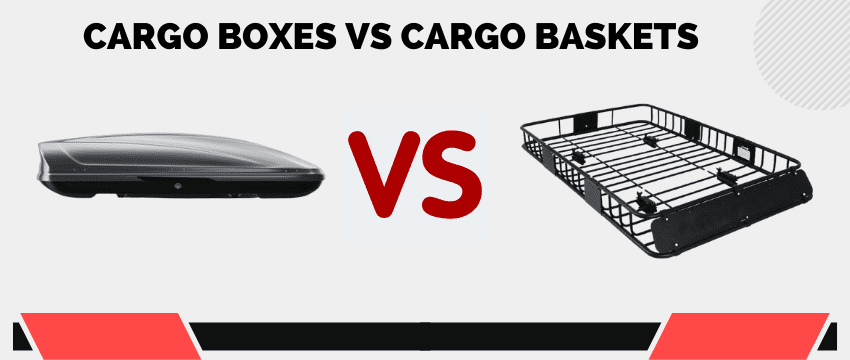What’s up, road warriors and adventure seekers? So, you finally snagged that awesome roof box – maybe a sleek Thule Motion, a rugged Yakima, or something totally perfect for your needs. It hauled your skis like a champ, swallowed camping gear whole, and made that epic family road trip possible without everyone losing their minds in a car stuffed to the gills. Totally legit! But now… the trip’s over. The gear’s unpacked. And there it sits, perched on your roof like a giant, slightly out-of-place hat.
What on earth do you do with your car roof box when it’s not in use? Leaving it up there permanently? Tempting for sheer laziness, but maybe not the best move. Stashing it somewhere? Easier said than done when it’s bulky! This is the classic post-adventure conundrum, and honestly, it trips up a lot of folks. Feeling a bit stuck? No worries, we’ve got you covered. Let’s dive deep into the smart, safe, and space-saving ways to handle your roof box during its downtime, keeping it pristine and ready for the next escape.
Why Bother Taking It Off? The Real Deal
Okay, let’s be real for a sec. The easiest thing, hands down, is to just… leave it on. Pop the hatch, grab your bags, and forget about it until next time. I get it! Life’s busy. But is leaving your roof box mounted full-time actually a good idea? Come on, let’s think this through. First up, fuel efficiency. That box, even the most aerodynamic one, is basically a giant sail catching wind. Off the top of my head, you could be looking at a drop of anywhere between 2% and a whopping 25% in your MPG, depending on your driving speed, the box size, and your car’s shape. Ouch! That adds up fast at the pump, especially with today’s prices. Noise is another grunt. That sweet highway hum you love? It can turn into an annoying whistle or roar with a box up top, making conversations tricky and tunes less enjoyable.

Then there’s the height hassle. Remember that low-clearance parking garage you zipped into last week? Forget it with the box on. Drive-thrus, some car washes, even your own garage suddenly become obstacle courses. Wear and tear? For real? Absolutely. Constant exposure to UV rays, rain, snow, road salt, and temperature swings is brutal on plastic. It can lead to fading, cracking, and seals degrading way faster than if it was stored properly. Plus, think about the extra strain on your roof rails and mounts – they weren’t necessarily designed for permanent heavy loads. And let’s not forget security – while locked, it’s still a visible temptation sitting out there 24/7. Thinking it might be okay? Weigh the pros and cons seriously in our deep dive on leaving a roof box on all the time. Spoiler: Taking it off usually wins for long-term health and your wallet!
Pre-Removal Prep: Don’t Just Yank It Off!
Alright, you’re convinced. Time to get that box down. But hold up! Before you and a buddy just grunt and lift, there’s a bit of prep work that’ll make everything smoother and protect your investment. First, give it a proper clean. Seriously, don’t skip this. You just drove through who-knows-what – bugs, bird bombs, road grime, maybe even tree sap. Leaving that gunk on there, especially if it bakes in the sun while stored, is asking for stains or permanent damage. Grab some mild car wash soap (harsh chemicals are a no-no!), a soft sponge or microfiber mitt, and give it a gentle bath.
Pay extra attention to the bottom where it meets the roof bars – dirt loves to hide there and can scratch your car or the box when you lift it. Next, dry it thoroughly. Like, really dry it. Trapped moisture inside a sealed box is a recipe for mold, mildew, and that awful damp smell nobody wants on their gear next trip. Pop it open, wipe down the interior seals and surfaces, and let it air out completely in a shaded spot if possible. Finally, inspect it. Give it a once-over while it’s clean and accessible. Check the mounting clamps or feet for any cracks or excessive wear. Look at the hinges and locking mechanisms – do they operate smoothly? Are the seals intact and supple? Spotting a minor issue now is way better than discovering a major failure miles from home on your next adventure. This little bit of TLC upfront saves you headaches later.
The Great Storage Debate: Where to Park Your Box
So, the box is clean, dry, and off the car. Awesome! Now, where does this bulky beast actually go? This is the million-dollar question, right? Your options boil down to two main camps: Inside or Outside. Each has pros and cons, heavily dependent on your living situation and how much space you can dedicate. Let’s break it down.
Stashing It Inside: The Gold Standard
Alright, let’s talk indoor storage – seriously, if you’ve got the room inside, this is hands-down the ultimate move for keeping your roof box kicking for years. Why’s it such a game-changer? Protection, plain and simple. Picture your box chilling indoors: Zero brutal sun beating down and turning that plastic brittle like an old lawn chair left outside. Zero rain or snow sneaking into tiny gaps and freezing or causing funky warping. Zero crazy hot-to-cold swings making the material expand and contract until it gets stressed out. Plus, you’re dodging those random “oops” moments – no rogue soccer balls, falling tree limbs, or squirrels thinking it’s their new luxury condo. Your garage?

Totally the VIP spot for this. It’s usually dry, fairly clean, and locked up tight – legit perfect. But hey, don’t just drag it in and dump it on the floor taking up prime parking space! That kinda defeats the purpose, right? Get creative with your vertical space – it’s a lifesaver. Could you rig up some heavy-duty straps or even a slick pulley system to hoist it right up to those ceiling joists? Boom. Floor space magically reappears. Not into hanging? No biggie. Check out wall brackets made specifically for these boxes – they hug it securely to the wall like it belongs there. Got crazy high ceilings? Platforms built over the garage door or along a wall? Perfect hidden nooks right there.**
No garage? I get it, not everyone scores that luxury. Don’t sweat it! A spare room corner, a dry section of the basement (seriously, watch the dampness – maybe grab a dehumidifier!), or even a sturdy attic can totally work. Same golden rules apply, though: Get it off the concrete or dirt floor. Prop it up on some sawhorses, a pallet, or build a simple shelf frame – anything to keep air flowing underneath and moisture at bay. Attic access can be a real grunt with a bulky box, so be honest about whether hauling it up that ladder is worth the hassle. Wherever you tuck it away indoors, tossing an old sheet or a soft cover over it keeps the dust bunnies from moving in. Yeah, finding the right indoor spot might take a little effort upfront – maybe moving some bins or rearranging – but trust me, your roof box will repay you tenfold by staying in awesome shape, ready for the next adventure. Think of it as giving your gear a cozy off-season cabin!
Making Outdoor Storage Work (When You Have No Choice)
Alright, let’s be honest – sometimes shoving that roof box indoors just isn’t happening. Your garage is already packed tighter than a concert venue, the basement smells like a swamp, and the attic hatch might as well be on the moon. Fair enough, storing it outside becomes the only play. It’s not ideal, but hey, it doesn’t have to be a total disaster if you play it smart. Your biggest outdoor enemies? That blazing sun is public enemy number one, no contest. Seriously, UV rays are brutal – they’ll fade the color faster than cheap jeans and slowly turn tough plastic brittle and prone to cracking, just like an old garden hose left out all summer.
And right behind the sun? Moisture’s creeping up as enemy number two. Think rain soaking in, snow melting into seams, or even just thick humidity creating a mini rainforest inside – all perfect for growing mold or warping the shape and wrecking those crucial seals that keep your gear dry. So how do you fight back? You absolutely, positively need a killer cover. Don’t even think about grabbing that old blue tarp from the shed – nice try, but it’s a trap! Cheap tarps trap moisture underneath like a sauna, cooking your box in its own sweat and doing way more damage than leaving it bare. You need the real deal: a proper, breathable, heavy-duty cover specifically made for roof boxes that blocks UV rays and rain while actually letting damp air escape.
Finding the right spot is half the battle. Don’t just plunk it down anywhere against the house where it gets full sun all afternoon – scout out some shade! Look for spots like tucked under a deep roof overhang where the eaves provide shelter, maybe a shaded nook on a covered patio, or even squeezed under a sturdy deck if it’s dry enough down there. Avoid low spots where rainwater likes to pool – nobody wants their box sitting in a puddle. And whatever you do, get it off the ground! Direct contact is a recipe for wicking moisture, collecting grime, and inviting every curious critter in the neighborhood for a tour.
Prop it up on sturdy sawhorses, a solid wooden pallet, or even cinder blocks wrapped in old towels to prevent scratches. This lets air circulate underneath, fighting dampness. Since it’s sitting out in the open, visibility equals vulnerability. Make it less tempting by threading a thick, weatherproof cable lock through its mounting points and securing it to something seriously immovable – a heavy-duty ground anchor cemented in, a massive steel post, that kind of thing. It won’t stop a determined thief, but it’ll definitely make the opportunist looking for easy pickings move along. This setup needs a little TLC though – trust me, you gotta peek at it every month or so. Make sure the cover hasn’t ripped or blown off in a storm, check for any sneaky signs of moisture getting in, and give pests the side-eye before they settle in.
Essential Features for Smart Roof Box Storage
Feature | Specification/Consideration |
|---|---|
Dimensions | Critical! Know length, width, height including mounting feet/clamps for space planning. |
Weight | Impacts lifting safety & storage method (e.g., ceiling pulley capacity). |
Material | ABS plastic common; needs UV protection outdoors. Aluminum more durable but heavier. |
Mounting Type | Key for hanging/stacking. Clamp styles vary (U-bolt, rapid system). |
Security Points | Built-in anchor points for cable locks during outdoor storage essential. |
Cover | Must be breathable, UV-resistant, water-repellent, custom-fit. Not a standard tarp. |
Lifting Points | Designated areas for safe handling (often near mounting points). |
Seal Integrity | Check before storage; ensure no cracks/dry rot. Lubricate per manufacturer. |
Interior Space | Allows storage of gear inside the box itself if space is tight (clean/dry first!). |
Keeping It Safe and Sound: Security Matters
Whether you stash it inside or out, security is a legit concern. Roof boxes aren’t cheap, and sadly, they can be targets. Outdoors: We already talked about the cable lock – use it religiously! Thread a thick, weather-resistant cable through the box’s mounting points or dedicated security loops (if it has them) and around something seriously immovable. Indoors: You might feel safer, but don’t get complacent. If your garage door is flimsy or often left open, consider locking the box itself. Some people even bolt simple hasps onto the box lid and base for an extra padlock. It’s a long shot someone breaks in just for the box, but why make it easy? Documentation is key too. Take clear photos of your box, including any unique scratches or features, and note down the serial number (usually found inside the lid or near the mounting points). If the worst happens, this info is gold for police reports and insurance claims. Peace of mind is worth the extra minute it takes.
Long-Term Care While It Chills
Storage isn’t just about location; it’s about maintenance during hibernation. Lubricate moving parts. A tiny bit of silicone spray (NOT WD-40!) on the locking mechanisms and hinges keeps them operating smoothly and prevents them from seizing up. Wipe off any excess. Check the seals. Those rubber gaskets around the lid are crucial for keeping water out. Ensure they’re clean and haven’t become brittle or cracked. A light application of rubber protectant (like 303 Protectant) can help keep them supple. Leave it slightly open? This is debated. Some swear by cracking the lid open a tiny bit (like with a small piece of foam) to promote airflow and prevent mustiness, especially if stored indoors. Others worry about dust or pests getting in. If your storage area is clean and dry, a slight crack can help. If it’s dusty or prone to bugs, keep it sealed. Use your judgment! Periodic Check-ins: Even in perfect storage, give it a quick look every month or two. Make sure no water is getting under a cover outdoors, no critters have set up shop, and everything still looks shipshape. A little attention prevents big surprises.

Seasonal Swaps: Adapting Your Strategy
Your storage approach might flex with the seasons. Summer: If you’re a big road-tripper, maybe the box lives on the car for a few months. Just be mindful of the fuel hit and sun exposure. When you take it off, deep clean it from all the highway grime. Winter: Ski season means the box is essential, but also facing snow, ice, and road salt. Give it an extra thorough clean before storing it away in spring, paying attention to salt residue which is corrosive. Off-Season (Spring/Fall): This is prime time for deep cleaning, inspection, and getting it into its ideal long-term storage spot if you know you won’t need it for a while. Think about your upcoming needs – if you know a big trip is coming in 3 months, maybe the garage floor spot is okay. If it’s going to be 9 months, prioritize the ceiling or wall mount. Being proactive saves scrambling later.
What If You Barely Use It? Exploring Alternatives
Let’s be honest. Maybe you bought the box for one epic trip a year, or even less. Seeing it take up half your garage for 360+ days can feel… excessive. Are there alternatives? Renting: For super infrequent use, renting a roof box can be a smart move. You avoid the upfront cost, the storage headache, and you only pay when you actually need it. Check local outdoor gear shops or peer-to-peer rental platforms. Is renting always cheaper long-term? Maybe not if you travel a lot, but for once-a-year? Fair enough, it’s worth crunching the numbers. Get the lowdown on the rent vs. buy roof box dilemma to see if it fits your style. Selling: If it’s genuinely gathering dust and you don’t foresee needing it again, selling it frees up cash and space. The used market for quality boxes (Thule, Yakima) is usually pretty good, especially if you’ve stored it well. Clean it up, take good pics, price it fairly, and pass it on to someone who’ll use it. Creative Re-Purposing: Feeling crafty? Some people turn rarely-used roof boxes into unique garden storage bins (drill drainage holes!), sled storage in the garage, or even quirky pet houses (thoroughly cleaned and ventilated, obviously!). It’s a long shot, but hey, it’s an option!
Is Buying a Roof Box Still Worth It? The Big Picture
After all this talk about storage hassles, you might be wondering: “Dude, is this thing even worth owning?” That’s a totally valid question! Let’s weigh it up. The Awesome Upsides: A roof box massively expands your cargo capacity. No more playing Tetris inside the car, no more leaving gear behind, no more passengers buried under bags. It enables longer trips, different types of trips (hello, bulky gear!), and generally reduces travel stress. For families, outdoor enthusiasts, or anyone who needs extra space without upgrading their vehicle, it’s often a game-changer.
The Downsides (Beyond Storage): We’ve covered storage, fuel hit, noise, and height issues. There’s also the initial cost, loading/unloading overhead (need a step stool?), and potential wind noise if not mounted perfectly. Check out a full list of the potential disadvantages of roof boxes so you go in eyes wide open. The Verdict? For many people, despite the storage question, the answer is a resounding yes. The convenience and capability often far outweigh the drawbacks, especially if you have a solid storage plan. It’s about how much you’ll use it. Still on the fence? Our guide on whether a roof box is worth buying breaks down the math and the lifestyle fit.
FAQs: Your Burning Roof Box Storage Questions Answered
Can I just leave stuff inside the roof box while it’s stored?
Technically, yes, if you’re storing the box itself indoors in a clean, dry, secure place (like your garage on a shelf). The box provides decent protection. BUT! Only store clean, dry, non-perishable items. Never leave damp gear, food, or anything smelly – that’s inviting mold and pests. Think off-season items: camping chairs, sleeping pads (clean!), maybe ski helmets/goggles. It’s a great space-saving hack! However, if you’re storing the box outdoors, even under a cover, absolutely do not leave anything valuable or sensitive inside. Temperature extremes, moisture seepage, and security risks are too high. Learn more about safe stuffing strategies inside your roof box.
My car doesn’t have roof rails! Can I even use a roof box?
Good question! Traditional roof boxes require solid roof rails or crossbars to clamp onto. No rails? No problem (usually). You have two main paths: 1. Install Roof Rails/Crossbars: This is the most robust solution. Many cars have fixed mounting points hidden under trim on the roof, allowing you to install OEM or aftermarket roof rails, then add crossbars, then the box. 2. No-Rail Roof Box Systems: These are less common but exist! Systems like the Thule Evo Clamp or Yakima Baseline use specialized feet that clamp directly onto your car’s rain gutters or door frames without needing traditional rails. It’s crucial to verify compatibility with your exact car model year. Dive into the specifics with our ultimate no-rail roof box guide.

How do I choose the RIGHT roof box in the first place?
Picking the right roof box from the start? Totally makes the storage headache way less gnarly later on! Seriously, focus hard on the size – grab a tape measure and figure out what you actually haul most trips, not that once-a-year camping extravaganza. Buying some giant, honkin’ box just because it might fit everything is a classic mistake; you’ll curse yourself trying to wedge that monster into your cramped garage corner or basement spot, plus it’ll suck down fuel like crazy every time it’s mounted. Get real numbers: measure the distance between your car’s crossbars, the width of your roof, and crucially, eyeball where you plan to stash it off-season – can that spot even handle the beast you’re eyeing? Shape matters big time too for daily life; sleek, low-profile models (think Thule Motion, Yakima SkyLine vibes) slice through the air cleaner, meaning less annoying wind howl and way less gas burned compared to taller, boxier tanks. Don’t forget the basics – will the clamps actually fit your specific roof bars (square, round, wing-shaped?)?
Material is a trade-off: ABS plastic is the affordable go-to and plenty tough, but the sun can chew through it over time if stored outdoors poorly, while fiberglass laughs off more abuse but weighs a ton and costs way more. What features actually make your life easier? Do you need dual-side opening for tight parking spots, or is one side fine? Is a super-wide hatch worth it for loading skis? Fancy internal lights or tie-downs – cool, but essential? Sticking with legit brands like Thule, Yakima, or Inno usually means better build quality and warranties that actually back you up when things get weird. Doing this homework upfront feels like a grunt, sure, but it’s the secret sauce to loving your box for years, not resenting the space it hogs. Get the deep dive on nailing your perfect car roof box pick for 2025.
Thule Motion 3 vs. Force 3 – which is easier to store?
Both are popular Thule lines! While storage ease depends more on the size you choose than the specific line, there are subtle differences. The Motion 3 generally has a slightly more aerodynamic, tapered shape, potentially making it fractionally easier to maneuver in tight storage spaces like a garage ceiling. The Force 3 often has a more squared-off rear end. Crucially, check the closed height of the specific models/sizes you’re comparing – a shorter height is always better for storage, regardless of the line. Weight is similar. The locking mechanisms and mounting hardware are comparable. For a super detailed breakdown beyond just storage, see our Thule Motion 3 vs Force 3 face-off.
So, What’s the Takeaway? Taming the Storage Beast
Look, managing your roof box off-duty isn’t always glamorous, but it doesn’t have to be a nightmare either. It boils down to being proactive and choosing the best possible option for your specific situation. Prioritize indoor storage if you can swing it – ceiling mounts or wall brackets are game-changers for garage space. If outdoor storage is unavoidable, invest in a quality UV-resistant, breathable cover, elevate the box off the ground, find shelter, and lock it down. Don’t skip the pre-storage clean and inspection! A little effort prevents big problems. And hey, if you barely use it, honestly consider renting or selling – no shame in that game.
Ultimately, that roof box represents freedom – the ability to pack up and go on adventures big and small. By giving it some thoughtful care during its downtime, you’re ensuring it’s ready to perform flawlessly when the open road calls again. No more dreading the post-trip box blues! You’ve got this. Now go enjoy that reclaimed garage space (or at least, the peace of mind knowing your gear is safe)! Catch you later on the highway!
Our team is creating outdoor-gear relevant articles with passion. If our articles can help you to find the correct solutions for your questions, we will be happy about that. In the content creation process, we usually collect accurate and useful information online or offline to compile our content in an organized way. Consequently, we can guarantee that you can discover some expected answers to your questions. We appreciate your time on our site.


